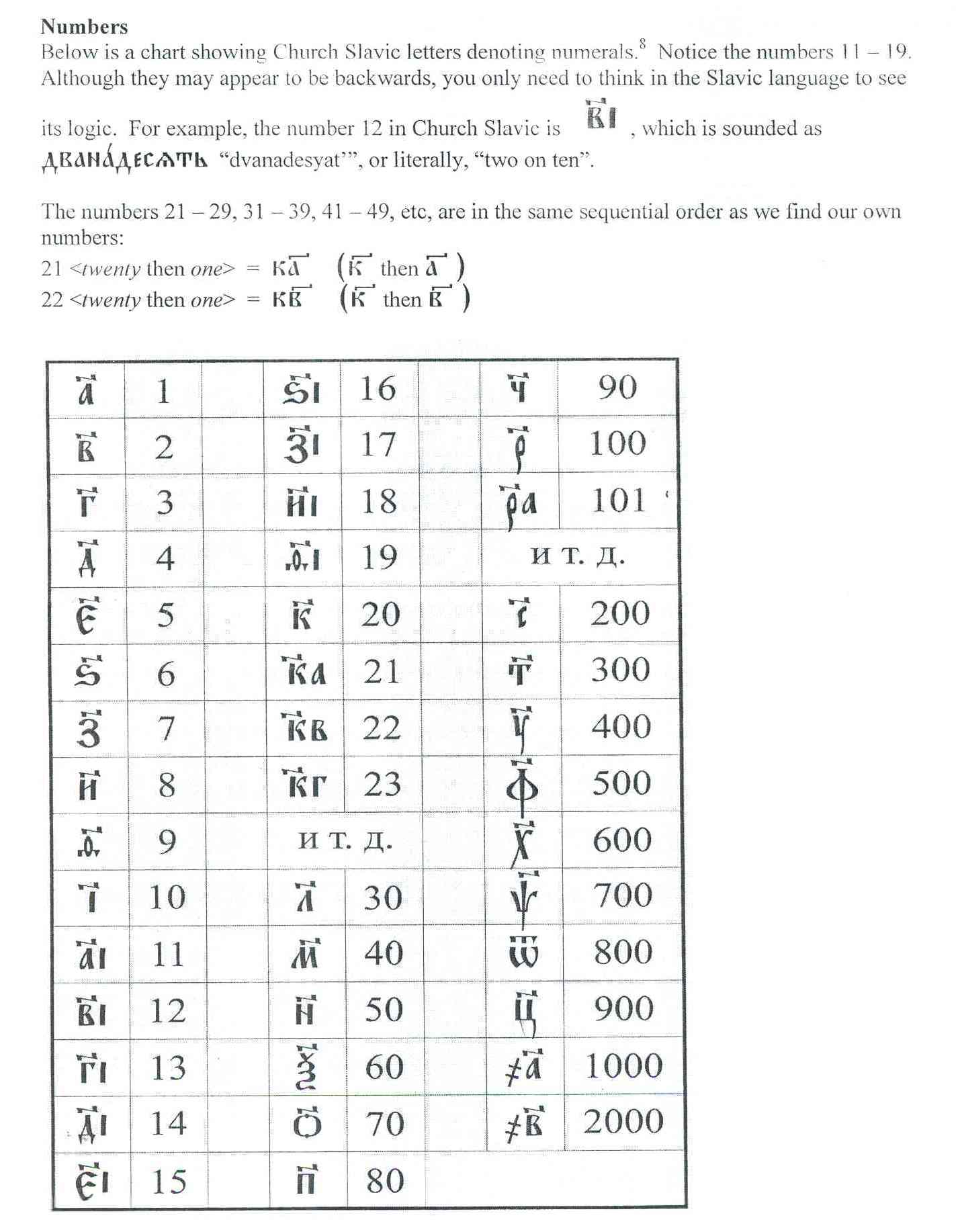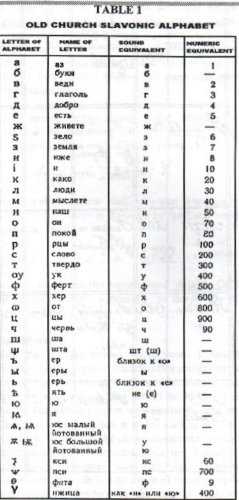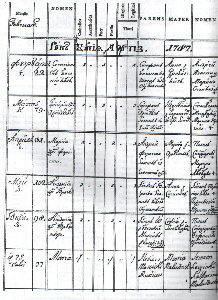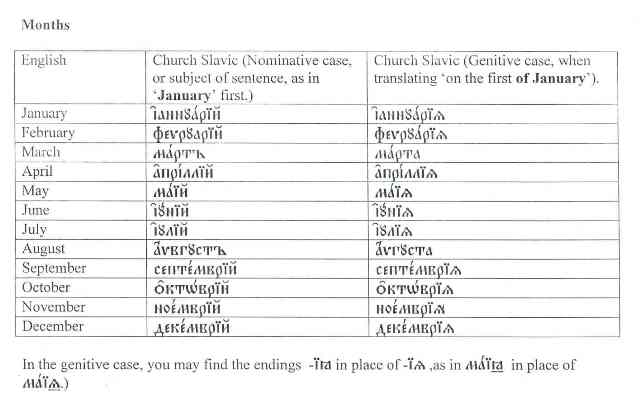Dates, Months, and Years in Church Slavic

Number System used in Old Church Slavic and Church Slavic
Greek Catholic parish records were often found written in
Church Slavic before the late 18th century. Shortly after the Austrian
Empire gained control of Halychyna / Galicia, a law was passed forcing parish
priests to use Latin in the recording of vital records. Latin was the
lingua franca
of the multi-ethnic empire. However, many older records exist for Greek
Catholic parishes where the vital records were recorded in Church Slavic.
The most confusing aspect of the writing system is the numeral system.

Understanding the Cyrillic alphabet is not enough to be
able to read parts of documents. Often, parish priests of the 17th
and 18th
centuries wrote numbers and dates in the Byzantine tradition, that is, using the
alphabetical letters in place of Arabic numerals. This shouldn’t seem strange
for we are all familiar with Roman numerals. This is the same system of
corresponding letters of the alphabet to numbers. In the Roman system, for
example, the letter I is equivalent to the number 1, the letter V to the number
5, the letter C to 100, and so on.
Old Church Slavic, and later adopted by Church Slavic,
had a similar system with its own alphabet, though a little more complex. Many
more letters of the Old Church Slavic alphabet were used for numbers. Whereas
the number 3 translates to Roman numeral III (I+I+I or 1+1+1), the Old Church
Slavic system had more unique equivalencies. To the left is the Old Church
Slavic alphabet with numeric equivalencies.
The chart on the left includes: Letter, Name
of the Letter, Sound Equivalent, Numeric Equivalent.
Double click on the chart to enlarge it.
When the letter was used as a number, a titlo was
written over and a dots were written around the letter(s). Though this is the
proper style, I have seen many documents without such diacritic marks.
(This table comes from the book Arvat N.N. and
Skiba, Ju. H. Drevnerusskii iazyk,
written by N.N. Arvat and Ju. H Skiba)
Numbers 11-19 are written in the opposite order as we
know them:

Numbers higher than 20 are treated in the usual order:

Here are some examples of Old
Church Slavic letters serving as dates.


This reads "of the month of March of the day 22"

Here are some examples of Old Church
Slavic letters serving as years.
In order to write years, a small mark ( ≠
) was placed under the first letter to denote ‘thousand.’


Remember, if this looks complicated to you, don't forget our Roman Numeral
System.
This 1787 would be written MDCCLXXXVII


This is 1774 (or MDCCLXXIV)

 This
reads: "In the year of the Lord 1787". This
reads: "In the year of the Lord 1787".
The priest included the year in both formats.

 Sample
full page. Double click on the page to enlarge it. Sample
full page. Double click on the page to enlarge it.
This is an example of a page that a Greek Catholic priest
wrote in Church Slavic with the columnar format that was incorporated by
Austrian law when the region was taken over by the Austrian Empire. (For a
history of record keeping in the years of Austrian rule (1772-1918), visit
Jonathan D. Shea's article on the
subject.)
In studying records from my ancestral Greek Catholic
parish of Bilyi Kamin (Білий Камінь) in western Ukraine,
I found a mixture of Old Church Slavic, Ukrainian, Polish, and Latin.
In the full page example above, you can see the transition from Church Slavic to
Latin in the very last entry of the page!
Calendars
Now that we are talking about years, I should mention the
two types of calendars that you can come across. Poland adopted the Gregorian
calendar (the calendar we currently use today) in 1582. The Austro-Hungarian
Empire was similarly using the Gregorian calendar when it seized Galicia in
1772. Russia, however, kept the old Julian calendar up until 1918, before
converting to the Gregorian. Therefore, you must remember this fact when reading
documents. You should be aware of the geography and changing borders of the
regions you are researching.
Names of the months in Church Slavic
While we are discussing dates, I should discuss months in
Church Slavic. Readers of English with a knowledge of the Cyrillic alphabet
should have no trouble reading the months since they are so close to English and
its Greek/Latin roots. The following table represents proper spelling. However,
one can find slight derivations in the examples from Bilyi Kamin Greek Catholic
records from the previous page. The priest from the parish often substituted
Ukrainian spellings for Church Slavic.

I am greatly indebted to Monsignor John Terlecky of St.
Basil College Ukrainian Catholic Seminary in Stamford, Connecticut, who
introduced me to some liturgical texts and who explained some of the
complexities of Church Slavic in respect to the months.
|